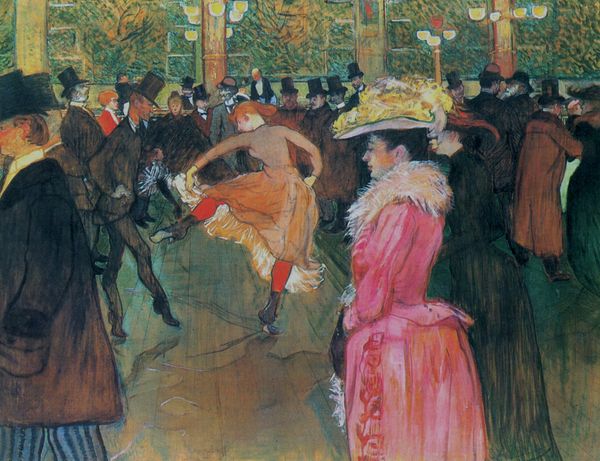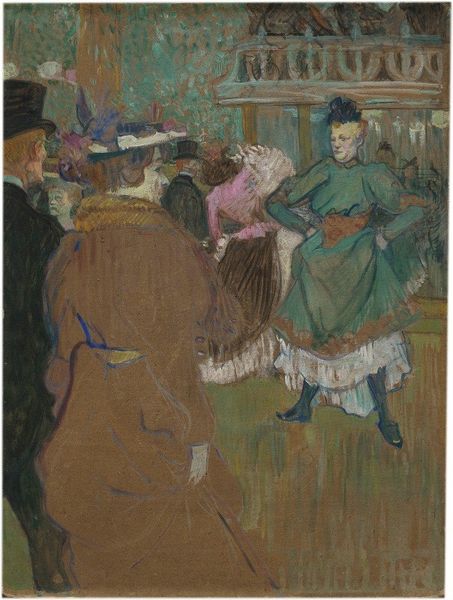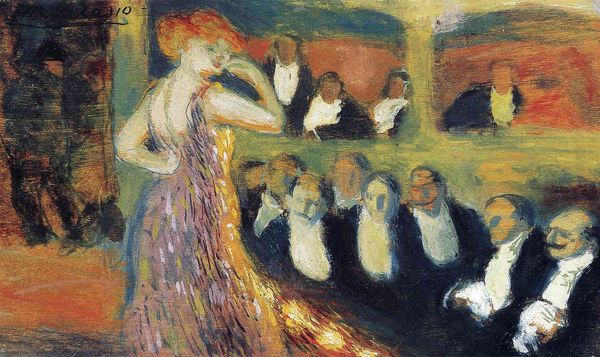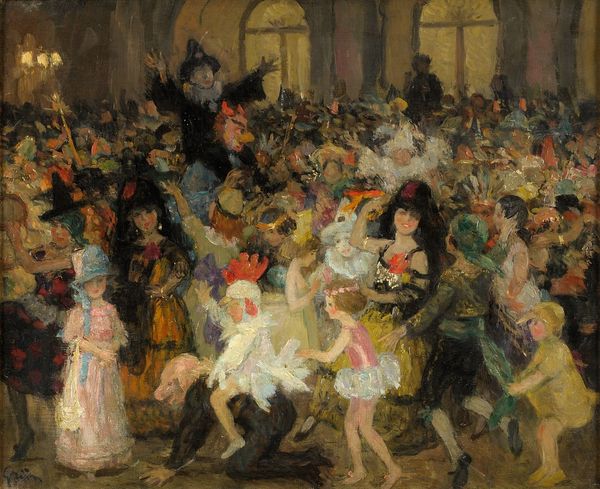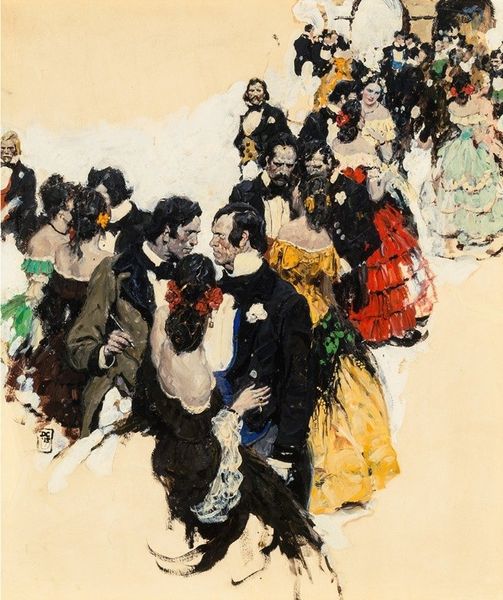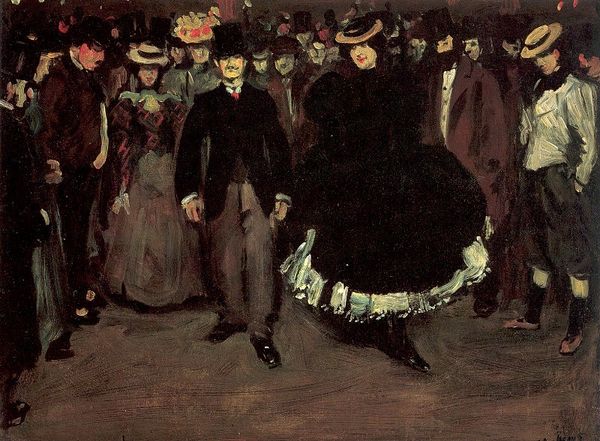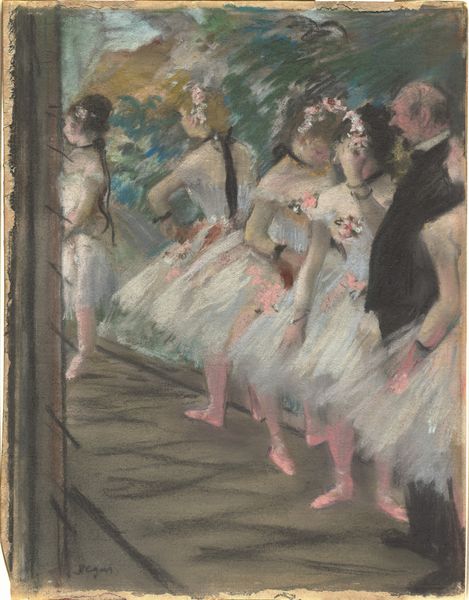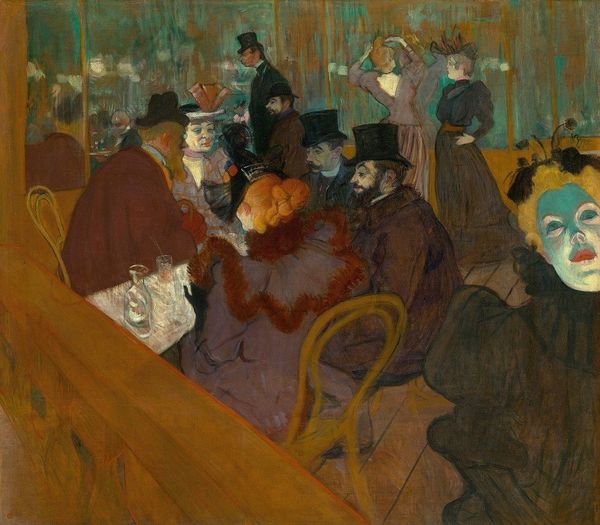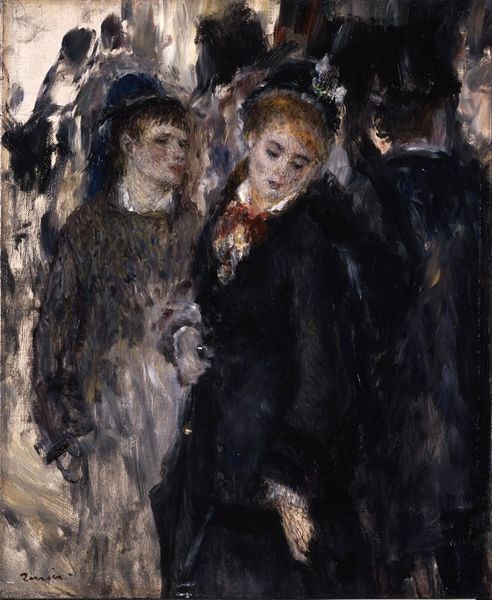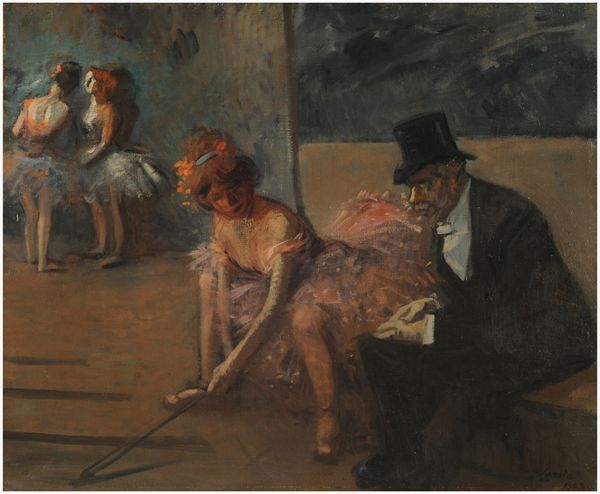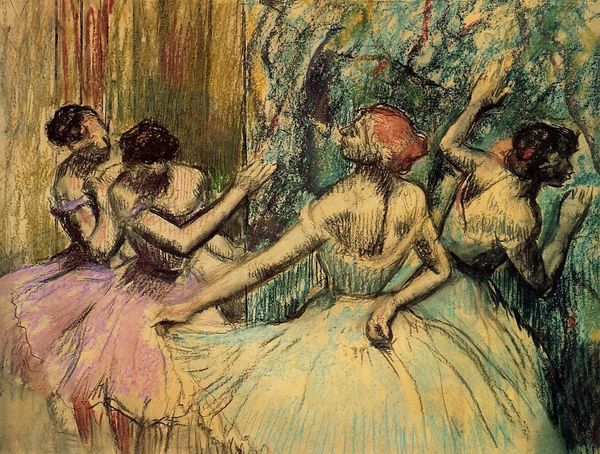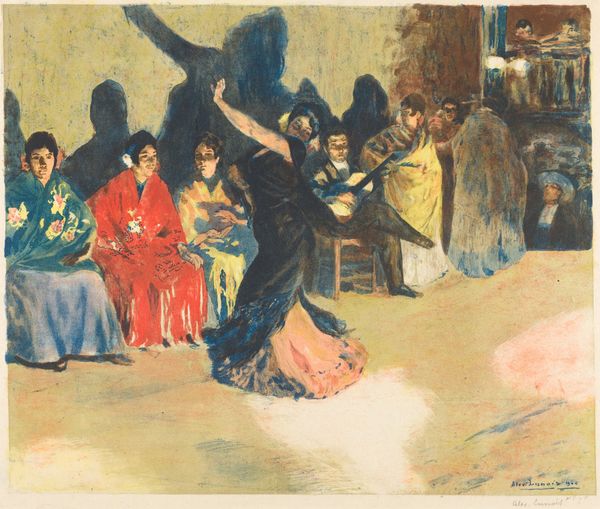
Copyright: Public Domain: Artvee
Curator: Look at this, it’s Toulouse-Lautrec’s "Marcelle Lender Dancing the Bolero in ‘Chilpéric’," painted circa 1895-96. He rendered it with gouache. Editor: Wow, what energy! The whole thing feels like it's spinning. The layering of that paint, look how thin and washy in places, how thick in others, gives her skirt so much volume and movement. You can almost hear the music and imagine the rustling fabric. Curator: Absolutely. It's not just the fabric, it’s Lender herself. Toulouse-Lautrec's paintings often depict performers from popular Parisian entertainment venues, and here he captures a specific moment. He spotlights Marcelle Lender's celebrated role, transforming the performance into an almost theatrical event, highlighting celebrity culture's rise. Editor: You know, focusing on the production aspect, the gouache on board is crucial here. It is relatively cheap material, quite befitting popular theater; but notice the detail given to the dancer, almost obscuring the others. See how quickly the crowd fades into the backdrop! Curator: And that backdrop is significant. It gives us, the viewer, context to Lender's popularity, linking her performance to a specific play and, in turn, understanding Toulouse-Lautrec’s keen interest in societal portrayals and narratives, almost journalistic in their intent. This also showcases art’s entanglement with mass entertainment at the turn of the century. Editor: It’s more than journalistic; it’s an active collaboration in building celebrity image, a branding, if you like. He is depicting an industrial performance, the gouache acting as another cog. Look at her pose, the leg extending: even then, there is an assembly process that is both delicate and reproducible on material such as print, photography. Curator: A crucial insight. It's this convergence—artistic skill meshing with industry and popular appeal—that truly exemplifies Toulouse-Lautrec’s talent and legacy. It shows how public and art history intertwine and impact social dynamics of representation. Editor: The layering gives it depth beyond the initial appearance. The combination of production and its reproduction helps us view its context and societal roots. Curator: Precisely. The more you analyze the interplay between art, representation and social standing, the more the artwork resonates. Editor: It really is captivating to delve into its construction and context to discover those layers.
Comments
No comments
Be the first to comment and join the conversation on the ultimate creative platform.
